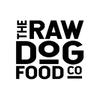November 27, 2023
As raw and natural feeders, our primary concern is obviously what we put in our dog’s bowls. But have you ever stopped to consider the bowl itself? Are some bowls better than others? Can bowls have an impact on your dog’s health? And how do you choose the right bowl for your dog?
In this blog article, we'll aim to answer all these questions. To do this we’ll complete a detailed assessment of the three most common types of feeding bowl – being: plastic, ceramic and stainless steel. We’ll also briefly discuss the following less common alternatives: glass, silicone, bamboo, melamine and aluminium.
To ensure a balanced and consistent evaluation of each bowl type, we’ll assess each against the following eight factors:
To complete an assessment, we’ll provide a rating of good (2 points), ok (1 point) or poor (0 points) against each of the eight factors. This will then allow us to provide an overall rating out of 16 (being the maximum possible number of available points). The best bowl will be the one with the highest number of points.
Plastics are derived from organic materials such as crude oil, natural gas, salt and coal. These ingredients are made into plastic via a process called polymerisation. There are many different types of polymer plastics, all of which have different properties and characteristics. Because they are cost effective and come in a range of sizes, shapes and colours, plastic dog bowls are popular and widely used.
Overall rating = 5/16
Overall, the risks associated with plastic feeding bowls outweigh the benefits. But if you are considering a plastic bowl, make sure you choose food grade plastic and avoid recycled plastic. You will also need to thoroughly wash and dry the bowl after each use and check it regularly for scratches and cracks. Never heat the bowl. If the bowl becomes damaged in any way or has a strange or unpleasant smell, ditch it, and get a new one.
Ceramic bowls are generally made from a mixture of clay, earthen elements, powders and water. They are shaped and then hardened by the application of heat. To prevent them from absorbing moisture, most ceramics are sealed with some form of glaze. Like plastic dog bowls, ceramic bowls are aesthetically appealing as they can be made into a wide range of shapes, sizes and colours.
Overall rating = 10/16
Overall, ceramic bowls provide a budget friendly, heavyweight and easy-to-clean option. They could be an option to consider if your dog is a vigorous eater and ‘bowl flipper’. However, ceramics can crack and shatter, and there is a risk of exposing your dog to lead. If you decide to go for a ceramic bowl, make sure it’s lead free. Look for non-toxic, dishwasher safe and microwave safe labels. You’ll also need to frequently check the bowl for cracks and damage.
Stainless steel is made from iron, carbon, and alloying elements such as chromium and nickel (where the addition of alloying elements provide resistance to corrosion). Stainless steel dog bowls are known for their durability and hygiene.
Overall rating = 14/16
Overall, stainless steel bowls rate highest as they’re non-toxic, safe, hygienic and highly durable. If you decide to go for a stainless steel dog bowl, make sure it’s food grade quality (200 or 300 grade series) and dishwasher safe. Be sceptical of any brands that don’t provide their stainless steel grade or if they’re labelled as ‘hand wash only’ or ‘for pet use only’.
For completeness, we’ve included a brief discussion on the following less common bowl alternatives: glass, silicone, bamboo, melamine and aluminium.
When choosing bowl size and shape, you should also consider the following factors:
If you put your dog’s health and wellbeing ahead of all else (including cost) and you want a highly durable, non-toxic, hygienic, safe and ‘easy to manage’ bowl – food grade stainless steel is the clear choice. Bamboo is also a contender, but as a relatively new product, is not yet well tested or backed with substantial evidence/research. Glass is a great option if the risk of breakage is low, and you’re not worried about limited variety and aesthetics. And silicone is a good choice for travel but isn’t practical for everyday use.
On the basis that risks outweigh the benefits, especially when it comes to health & safety – plastic, ceramic, melamine and aluminium bowls are probably best avoided (unless you can be sure of quality and follow careful cleaning and maintenance procedures).
If you’re looking for a food grade (304 grade) stainless steel bowls in a range of sizes and modern colours – check out the Led & Collared Dog Feeding Bowls.
We also love these... Dog Feeding Mat | Led & Collared NZ (ledandcollared.co.nz)
References:
July 13, 2025
Thinking about feeding your dog raw? You’re not alone! More Kiwis are making the switch to raw dog food to keep their pups healthy and happy. Check out the benefits, tips, and best options in NZ!
February 01, 2025
Want to give your dog the best? Discover everything you need to know about homemade raw dog food in NZ! From simple recipes to local ingredient tips, we make it easy to feed your pup fresh, healthy meals they’ll love.
January 13, 2025
Looking for simple and healthy raw dog food recipes in NZ? Discover easy homemade meals using fresh, local ingredients that your dog will love. Perfect for Kiwi dog owners wanting to boost their pup’s health naturally!
Join our mailing list for news, updates and special promotions.
© 2025 The Raw Dog Food Co.
Auckland, New Zealand
Powered by Shopify
